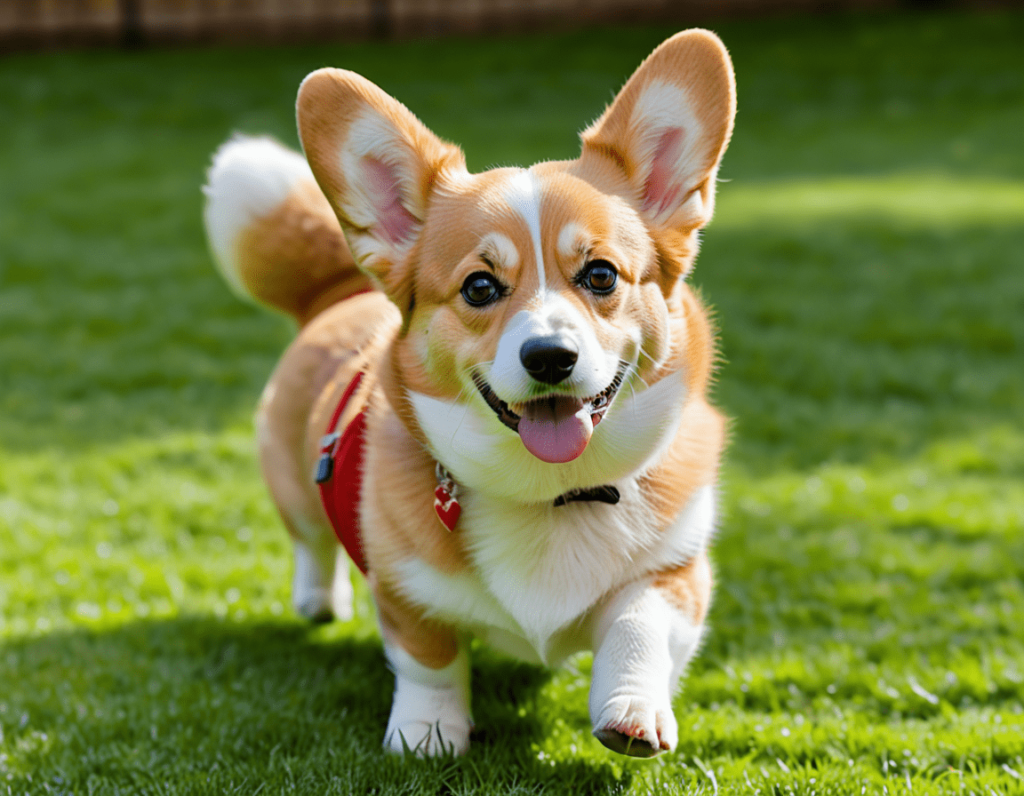
Leaving our furry friends alone at home can be tough—especially when they give you those big puppy eyes that seem to say, “Don’t go! I’ll miss you too much!” If your dog suffers from separation anxiety, it can be a stressful situation for both of you. Fortunately, there are plenty of ways to help your pup feel more comfortable when you’re away. So grab a treat (for your dog, of course) and let’s explore how to tackle this common canine concern with a bit of humour and a lot of heart!
What is separation anxiety?
Separation anxiety is when dogs become stressed or anxious when they’re left alone or separated from their owners. Symptoms can range from barking and whining to destructive behaviors like chewing furniture or digging through trash (it seems they never learnt the “don’t eat that” rule). If your dog has ever turned your favourite shoes into a chew toy while you were out, you might be dealing with separation anxiety.
Signs of Separation Anxiety
To determine if your dog is experiencing separation anxiety, look for these common signs:
- Excessive barking or whining: If your dog sounds like they’re auditioning for a musical when you leave, it’s a sign they’re not happy.
- Destructive behaviour: Chewed furniture or overturned trash cans can indicate anxiety. (No, they’re not just trying to redecorate your home.)
- Pacing or restlessness: If your dog seems to be walking in circles like they’re preparing for a marathon, they might be feeling anxious.
- Urinating or defecating indoors: Even if they’re house-trained, a stressed dog may have accidents when left alone.
- Trying to escape: Some dogs will attempt to break free by digging, clawing, or barking at doors and windows. It’s like they’re training for a canine version of “Mission Impossible”!

Tips for Managing Separation Anxiety
Now that we’ve identified the problem, let’s explore some effective strategies to help your dog cope with separation anxiety.
1. Practice Short Departures
To help your dog get used to being alone, start with short absences. Leave the house for just a few minutes and gradually increase the time you’re away. Your dog will learn that you always come back—plus, they get to practice their sad puppy face without you around!
2. Create a Safe Space
Designate a cosy area in your home where your dog can feel safe and comfortable when you’re gone. Fill it with their favourite toys, a comfy bed, and maybe even an item of your clothing (they love that human scent!). This can be their little retreat when the world feels too big without you.
3. Use Interactive Toys
Keep your dog occupied while you’re away with interactive toys or puzzle feeders. These toys can challenge their minds and distract them from your absence. Just think of it as a canine version of a video game—except there’s no “game over” when you leave!
4. Establish a Routine
Dogs thrive on routine. Try to keep your departures and arrivals low-key. If you make a big fuss when you leave or come home, your dog might pick up on that excitement and feel anxious about your absence. Instead, give them a quick pat, say goodbye, and head out the door. Bonus points if you don’t trip over the threshold on your way out!
5. Consider Crate Training
If done correctly, crate training can provide a safe haven for your dog. Start by making the crate a positive space, with treats and toys inside. Gradually increase the time they spend in the cage while you’re home. When they see it as their own personal den, it can help reduce anxiety when you leave.
6. Provide Background Noise
Some dogs feel more at ease with background noise. Consider leaving a TV or radio on while you’re away. Choose a calming show or soothing music—it might even make them think they’re having a cosy movie night without you!
7. Consult a Professional
If your dog’s separation anxiety is severe and the above methods aren’t helping, it might be time to consult a professional trainer or a veterinarian. They can provide tailored advice and may recommend behaviour modification techniques or medication if necessary. Remember, it’s okay to ask for help—everyone needs a little support sometimes!
8. Desensitization Training
Desensitisation is a gradual process that helps your dog become accustomed to being alone. Start by leaving the room for short periods while still being in sight, and then gradually extend that time. Eventually, your pup will learn that being alone isn’t the end of the world—more like a brief intermission in their exciting day!
9. Give Them a Job
Engaging your dog’s mind can help alleviate anxiety. Teach them a new trick or command that they can practice while you’re away. Not only does this keep their brain busy, but it also boosts their confidence! Who wouldn’t want a dog that can roll over and play dead? Just don’t expect them to do it on cue during family gatherings!
10. Stay Calm and Confident
Dogs can pick up on our emotions. If you’re anxious about leaving, your dog may feel that tension. Approach your departures with confidence and calmness. It’s like that saying, “Fake it till you make it”—except in this case, you’ll actually help your pup feel more secure!
11. Use Calming Products
There are a variety of calming products available that can help ease your dog’s anxiety. These range from pheromone diffusers and calming collars to anxiety wraps that provide a gentle, comforting pressure. Just be sure to follow the instructions, and maybe avoid wrapping them too tightly—after all, they’re not burritos!
12. Teach Independence
Encourage your dog to enjoy some alone time while you’re at home. Give them a designated spot to relax while you go about your day, whether it’s in a separate room or a cosy corner. This helps them learn that it’s okay to be alone, even when you’re nearby.
13. Explore Doggy Daycare
If it fits your lifestyle, consider enrolling your dog in a reputable doggy daycare. This gives them the chance to socialise and play with other dogs, reducing feelings of loneliness. Plus, they’ll come home tired and happy—what’s better than a worn-out pup?
Wrapping Up the Woof
Separation anxiety in dogs is a common issue, but it’s manageable with the right tools and strategies. Remember, the goal is to help your furry friend feel safe and secure, so they can enjoy their time alone without worrying that you’ve vanished forever. It may take some time and patience, but with your love and understanding, you can make a world of difference for your dog.
And while you’re at it, try to appreciate the little quirks and funny moments that come with being a dog owner. Like when they greet you at the door as if you’ve returned from an epic journey, or when they try to convince you that they didn’t eat the couch cushion (even though you caught them red-pawed). Life with dogs is a joy, filled with laughter and love, so cherish those moments—even the ones that leave you wondering how a little furball can cause so much chaos!

Dealing with Separation Anxiety in Dogs: FAQs
Understanding and addressing separation anxiety in dogs can be challenging, but having the right information can make a big difference. Here are some frequently asked questions (FAQs) to help you navigate this common issue.
1. What is separation anxiety in dogs?
Separation anxiety is a behavioural condition in dogs characterised by excessive distress when they are left alone or separated from their owner. It can manifest through various behaviours, such as barking, whining, destructive actions, or attempts to escape.
2. What are the signs of separation anxiety?
Common signs include:
- Excessive barking or whining when left alone
- Destructive behaviors like chewing furniture or scratching doors
- Pacing or restlessness
- Accidents in the house despite being house-trained
- Attempting to escape or dig out of their confinement
3. How can I tell if my dog has separation anxiety or just normal boredom?
While both separation anxiety and boredom can lead to destructive behaviours, separation anxiety is typically accompanied by more extreme distress. Dogs with separation anxiety may show signs of panic when you prepare to leave, while bored dogs might just need more mental and physical stimulation.
4. What should I do if my dog is showing signs of separation anxiety?
Start by implementing some strategies, such as:
- Practicing short departures to help them get used to being alone.
- Creating a safe space with their favourite toys and items.
- Using interactive toys to keep them occupied.
- Establishing a consistent routine. If symptoms persist, consider consulting a veterinarian or a professional dog trainer.
5. Is crate training effective for dogs with separation anxiety?
Crate training can be effective if done correctly. A crate can provide a secure space for your dog, but it’s important to make it a positive experience. Start slowly by allowing your dog to explore the crate while you’re home, gradually increasing the time they spend inside while you’re away.
6. Are there any calming products for dogs with separation anxiety?
Yes! There are various calming products available, such as pheromone diffusers, calming collars, and anxiety wraps. These products can help soothe your dog when you’re not around, but it’s best to combine them with behavioural training for optimal results.
7. How long does it take for a dog to overcome separation anxiety?
The time it takes for a dog to overcome separation anxiety varies depending on the severity of the condition, the individual dog, and the techniques used. With consistent training and support, many dogs show improvement within weeks, while others may take months to feel more comfortable.
8. Can medication help with my dog's separation anxiety?
In severe cases, a veterinarian may prescribe medication to help alleviate anxiety. However, medication should be combined with behavioural training and not seen as a standalone solution. Always consult with your vet to discuss the best options for your dog’s specific needs.
9. What if my dog has separation anxiety only when I'm not at home?
If your dog exhibits anxiety only when you’re away, the same strategies apply. Focus on creating a positive departure routine, practicing desensitisation, and using interactive toys to keep them engaged while you’re gone.
10. Is it possible for a dog to outgrow separation anxiety?
Some dogs may outgrow their separation anxiety as they mature and develop confidence. However, many will need ongoing support and training throughout their lives. Consistent efforts to address the issue can lead to significant improvements in their comfort level.


